- Home
- S. Hussain Zaidi
Byculla to Bangkok
Byculla to Bangkok Read online
Byculla to Bangkok
S. HUSSAIN ZAIDI
HarperCollins Publishers India
For Velly
and
my sons Ammar and Zain,
the centre of my universe
Author’s Note
Byculla to Bangkok completes my previous book, Dongri to Dubai (D2D), which chronicled the Mumbai mafia and its tryst with the city in the last six decades. D2D concentrated on Dawood Ibrahim’s exponential rise from a street thug to a global ganglord and the people around him who contributed to his growth, including Haji Mastan, Karim Lala, Bashu Dada, Varadarajan Mudaliar and other criminals of the era.
While writing Black Friday, my first book, I had keenly felt the absence of any literature on the Mumbai mafia. When D2D finally emerged in 2012 after seven years of gruelling and intensive research, I found that much had been left unsaid. While D2D spoke of Dawood and his predecessors, I had left out the sons-of-the-soil (if I may borrow the late Bal Thackeray’s favourite buzzword). The Mumbai mafia lore is incomplete without the inclusion of the local lads – those from the mill heartlands who were born in Byculla, Parel, Lalbaug and got sucked into the vortex of the socio-economic quagmire that kept the poor in a circle of poverty for generations. As we remodel south-central Mumbai into a Manhattan, we have to remember that we have failed to redress the issues that once drew promising young men to a life of crime. No city can grow unless there is a concomitant growthof its denizens. The transformation of the mill lands into a swank upper-crust module has left thousands of young men from these areas in the red. The malls are no compensation, as they are filled withrestless young men who work twelve hours a day withhardly any job security or personal growth. Thus the stories of the first batch of wayward youthwho became gangsters are relevant even today and are also inextricably linked to the social history and map of the city.
Chhota Rajan, Arun Gawli, Amar Naik, Ashwin Naik, Suresh Manchekar, Sunil Sawant, D. K. Rao and so many other boys grew up at a time when money was scarce and opportunities limited. Save for a handful of survivors, all the rest were killed in police encounters. Their story runs parallel withthat of the degradation of the Mumbai police force. Until the early nineties, the Mumbai police by and large had some credibility. But withthe onset of ‘encounters’, they became pawns in the hands of politicians. Political parties that had initially patronized the mafia marked them out in a use-and-throw policy.
The only redeeming aspect of these encounters was that fewer local boys dared to step out of line.
In this book, I have not dealt withseveral events already elaborated upon in D2D, for example the J.J. Hospital shootout or Chhota Rajan’s assassination attempt in Bangkok. Those and other incidents have been comprehensively covered in the earlier book. It is also not possible to chronicle the entire history of Mumbai’s Maharashtrian mafia in a few hundred pages. However, I have chosen those stories and narratives that form the crux of their rise and decline to provide a perspective to readers who want to know more about the mafia landscape of Mumbai.
Contents
Dedication
Author’s Note
Prologue
1. The Emperor of Aurangabad Jail
2. Ghatis versus Bhaiyyas
3. Girangaon: The Village of Mills
4. The First Meeting
5. The Vegetable Vendor’s Vendetta
6. Gawli’s Gumption
7. Mithun Mania
8. Baptized by Bapat
9. The Byculla Company
10. The Second Meeting
11. Civil Engineer Turns Criminal
12. The Ambush
13. Manchekar and Mother
14. Dawood’s Killing Machine
15. Raavan
16. Mumbai’s Mickey and Mallory
17. Mobster’s Maryada
18. Dons’ Divorce
19. Ashwin’s Assault
20. Mills and Minions
21. The Third Meeting
22. The Crippling Bullet
23. Kill Khatau
24. Maharashtrian Mafia’s Anno Domini: 1994-95
25. The Demolition Squad
26. Dance of Death in Dubai
27. Of Gangsters, Guns and Ganpati
28. The Afghani Affliction
29. Gawli’s War on the Shiv Sena
30. The Face-off
31. Carte Blanche
32. The Bullet Raj
33. Death of a Doctor
34. Shakeel Stuns the Sena
35. Ashwin at the Helm
36. Murder of a Mafia Queen
37. Rajan’s Revenge
38. Mumbai Gangsters in Bangkok
39. Manhunt for Maharaj
40. The Encounter-proof Gangster
41. Ashwin Atones
42. Amjad Khan’s Sholay
43. Daddy Demolished
Epilogue: The End of the Encounter Elite
Acknowledgements
Sources
Photographic Insert
About the Author
Copyright
Prologue
6 MAY 1993
The police cruiser was racing along at breakneck speed. The plainclothes men from crime branch unit VII were anxious, uncertain as they were about this operation.
They were chasing three occupants of a Neptune-blue Maruti-Suzuki 800, the car of choice for most Indians from the moment it hit the roads in 1983. The Mumbai mafia loved the little car; it was easy to manoeuvre when the police were hot on their heels.
In the back was a man called Chandrakant Talwalekar. The two men in the front seat were considered to be Mumbai’s most ferocious hitmen: Subhash and Ganesh Kunchikurve. Together, they were known as the Makadwala brothers. Their community is known for broom- and basket-making and training monkeys for roadside shows, hence the moniker Makadwala. The Makadwala compound in Dharavi, in south-central Mumbai, is inhabited by the Kunchikurves, a simple community considered incapable of doing what these renegades were about to do. The notorious Subhash Kunchikurve wielded not a broom but an AK-56. This at a time when Mumbai had not even heard of automatic machine guns; the Mumbai police were still struggling with their outdated self-loading rifles (SLRs) from the 1940s.
The Makadwala brothers were part of the hunter-gatherer Yerukala community, which had been forced out of the caste system after it lost the right to a livelihood; the hunting and gathering of forest produce had been banned in 1878. They were from Andhra Pradesh, Karnataka and Tamil Nadu, and in the north, they were related to the Bhils and the Kiratas. The British had declared them a criminal tribe in 1935. They were among fifteen communities branded in this manner, with the result that they had to report to the police station every time their settlements moved from one place to another. They spoke two languages – one within the community, which had secret codes, and another with outsiders.
In the 1930s, the community migrated to Mumbai and several of them settled in Dharavi, in what is now called the Makadwala compound. The women of the community were said to be good at fortune-telling. But fortune-telling in Mumbai did not take off as they had expected, and they took their place at the margins again, making brooms, weaving baskets and training monkeys. The Yerukalas were such precise, expert hunters that they could easily nail a running animal or a flying bird; the Makadwala brothers’ skill as sharpshooters was taken for granted.
Subhash Makadwala was part of the group led by Anil Parab, who was Dawood Ibrahim’s trusted aide. Subhash had a record of more than twenty-five murders, most of them executed with a ruthless spray of AK-56 bullets. Mumbai was used to high-profile killings, daylight murders, executions by the mafia. But the use of the Russian-made Kalashnikov assault gun in a civilian killing chilled the blood of even the most hardened
police officers.
Subhash walked around with his AK-56 just as people walk around with their umbrellas during the monsoon. He carried it with him everywhere. When he went to a beer bar, he kept the gun on the table. His close aides were terrified of both the gun and its owner: Subhash was known to open fire indiscriminately, at the slightest provocation.
The terror the Makadwala brothers evoked had spread amongst Mumbai’s business community. Builders, hoteliers, share brokers, film producers, distributors and even actors were threatened, tortured and exploited by them. Subhash was especially notorious. A buxom Pakistani actress who sang with a nasal twang was the hapless recipient of his attentions – and the victim of his baser instincts. The gangster sexually exploited the Bollywood diva for a considerable period, and it is said that he made her sing each time before raping her. She was so terrified that she could not even muster up the courage to lodge a formal police complaint against him.
The Mumbai police were reduced to mere spectators in the face of Makadwala’s terror spree. The impotence of the police and their adherence to the basic police credo of ‘qayeda mein fayeda’ (the benefits of following the law) had so emboldened Subhash Makadwala that he boasted that no one but the Special Operations Squad (SOS) could touch him, let alone arrest or kill him.
And this was one such attempt. The Bandra unit of the crime branch had received information that Subhash and his men were about to exit a flat at Amrut Nagar in Ghatkopar, in the north-eastern suburbs of Mumbai – and had sprung into action.
Within seconds, Inspector Shankar Kamble was on the phone with Additional Commissioner of Police (ACP) Hasan Ghafoor, who was with the crime branch, for consent to raid the flat. Ghafoor’s response, full of grit and purpose, was: ‘Get Makadwala, dead or alive’. It was 6 May 1993, the city was still reeling from the serial blasts of 12 March and Ghafoor had sworn to uproot the mafia menace from the city. The directive was to cost him dearly.
But the order was a shot in the arm for the disparate group of seasoned plainclothes officers who immediately left for Amrut Nagar. Kamble had shown great presence of mind by assembling a rag-tag team of officers who were willing to take risks. Eventually, this team went on to become Mumbai’s top encounter specialists.
Sub-inspectors Vijay Salaskar and Pradeep Sharma were part of the team. Salaskar took the wheel and Sharma cradled a .9 mm carbine on his lap as he took the seat next to Salaskar.
Bravado aside, they were unsure whether they would come back on their feet or on a stretcher. Before leaving their offices, they all called home nervously and spoke to their wives and children, without letting on anything about their destination or explaining the sudden burst of aff ection.
As the police cruiser arrived at the building, they saw the blue Maruti leaving the building premises. Caught at last!
Salaskar recognized Subhash immediately and tried to block his exit, though wary of Subhash’s infamous AK-56. The driver of the Maruti 800 gave the police the dipper. Salaskar ignored it.
The driver immediately reversed the car, turned and straightened it with amazing dexterity, wheels screeching loudly in protest, and began to climb the steep slope of Amrut Nagar, in the opposite direction.
It was Salaskar’s turn to display his skill as a driver. He revved the engine, almost standing on the accelerator, and jumped ahead of the other car. Both vehicles were now racing, sides bumping against each other in the dark night. Amrut Nagar was yet to be developed at the time, and the infrastructure was still in a shambles. The roads did not even have streetlights, so both vehicles kept grinding up against each other.
Salaskar shouted to Pradeep Sharma to shoot through the windscreen, instructing him not to lean out of the window as he did so. Sometimes a delay of nanoseconds at a time like this could drastically influence the outcome of an operation.
Suddenly, the wheels of the Maruti 800 screeched loudly and the vehicle crashed into a tree. Subhash grabbed his AK-56 and his bullets shattered the windscreen of the police jeep. This was the decisive moment.
The night was rent with the sound of incessant gunfire as Sharma acted swiftly and fired his carbine. It was a do-or-die moment for the police team.
Salaskar and Kamble drew their .38 weapons and fired round upon round on the sharpshooters, praying that they would find their mark before the gangsters did. Soon, silence reigned in the other camp. At long last, victory! The crime branch cops had managed to eliminate Mumbai’s most wanted gangsters.
Though the skirmish was over in a matter of seconds, it seemed like an eternity for the police party. Two AK-56 guns and an abundance of magazines, pistols and grenades were found in the boot of the car.
The police department heaved a collective sigh of relief. The worst was over. Or, was it?
The killing of the Makadwalas had drawn the curtains on another chapter in the history of the mafia in Mumbai. Members of the business community burst crackers and organized a feast. The newspapers were full of panegyric reports the next day and the media hailed Sharma and Salaskar as heroes.
Hasan Ghafoor was elated at the success of his men and wanted to felicitate the bravehearts who had risked their lives in such a fashion. The next day, he summoned them to the police headquarters so that he could present them to the police commissioner for due praise.
For the officers of sub-inspector rank, appreciation and encouraging words from the police commissioner are no less than a gold medal in the Olympics. So, when Ghafoor called to say he wanted them to meet Police Commissioner Amarjeet Singh Samra, the police party was charged with anticipation.
Samra was an upright cop and his tenure in the IPS had witnessed zero controversy. During the communal riots of 1992-93, when the whole country burnt and blood was spilt on the streets, Thane had remained peaceful and registered no incidents of communal discontent. It was this sterling track record that had earned him the job of Mumbai police chief. Within days of taking charge, however, he had come up against the enemy force in an unprecedented manner: the city suffered one of the most horrific attacks on it, on 12 March.
Muslim police officers in the force, regardless of their rank, were demoralized by the blasts. They were embarrassed and ashamed of the handiwork of the terrorists who masqueraded as good Muslims. Ghafoor, a Muslim himself, had gone through personal hell and was at a loss to explain the heinous acts that stigmatized a whole community.
Ghafoor hoped the Makadwala encounter would bolster the sagging confidence of the police force. But he did not know what lay in store for him when he led the police team to the commissioner’s office on the first floor of the main building.
He knocked and entered the cabin, followed by his team of police officers, who formed a row and gave Samra a stiff salute. The turbaned Sikh cop looked up at Ghafoor curiously, asking who the men were and what had brought them there. Ghafoor said, with a mixture of pride and diffidence, ‘Sir, these officers were successful in getting Makadwala. I thought you would want to see them and commend them on their good work.’
What happened next had Ghafoor reeling. The usually cool-headed Samra sprang to his feet and shouted, ‘What the hell! Why have you brought them here? I don’t want to meet these killers. Ask them to get out of here. Out!’
Kamble, Salaskar, Sharma and the others looked at each other and rushed to the door. They stopped only at the reception, where they waited for Ghafoor to join them. None of them uttered a word until they saw a flustered Ghafoor emerging from the office of the police commissioner, beads of sweat and worry lines on his face.
‘The commissioner said one of the three men killed in the encounter had no criminal record. He is upset about his death,’ Ghafoor tried to explain his boss’s fury.
Kamble, considered to be one of the most blunt and outspoken officers of the Mumbai police force, showed remarkable patience when he told Ghafoor, ‘Sir, when someone opens fire at us and we are in danger of being killed, we cannot wait to check the person’s criminal record. We retaliate to save our lives. And t
hese men were with Makadwala. For us, each of them was as dangerous as Makadwala was.’
Ghafoor nodded. But as he turned to leave, he said, ‘He does not want any more encounters.’
He walked away. The much anticipated success party had ended in an anticlimax, throwing another pall of gloom over the crime branch.
Soon, Hasan Ghafoor was shunted out of the crime branch, apparently for administrative reasons, and posted at the nondescript Anti-Corruption Bureau.
Two police officers, though, were unperturbed by these developments: Vijay Salaskar and Pradeep Sharma. They continued to work in the crime branch and nursed other plans – known only to the two of them.
ONE
The Emperor of Aurangabad Jail
Mumbai’s most ferocious ganglord-turned-MLA, Arun Gawli, was convicted by a special MCOCA (Maharashtra Control of Organised Crime Act) court on 12 August 2013 and sentenced to life imprisonment for the murder of former Shiv Sena corporator Kamlakar Jamsandekar. Jamsandekar had been shot dead in March 2008, at his residence in suburban Ghatkopar.
Gawli was accused of having paid Rs 30 lakh to his men to kill Jamsandekar over a dispute regarding a piece of land. He and eleven others were found guilty by the court.
The court sent Gawli to jail for twenty years: ten for being a member of a murderous, organized crime syndicate and ten for extortion. While delivering the judgment, judge Prithviraj Chavan said, ‘Instead of death, I am giving you life imprisonment.’
Arun Gawli’s conviction set me thinking about his power and considerable clout back in the nineties, something I had personally witnessed during my first meeting with the gangster. This was in the confines of Harsul Jail in Aurangabad, in 1996.
Harsul is one of the largest jails in Maharashtra, and Gawli and his gang had found themselves cooling their heels there and eating spicy Aurangabad curry; it was the only place they could rest without crossing swords with other mobsters owing allegiance to other bosses.

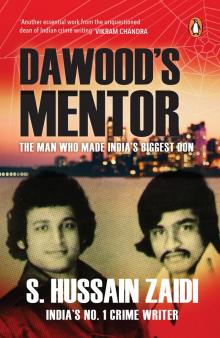 Dawood's Mentor
Dawood's Mentor HEADLEY AND I
HEADLEY AND I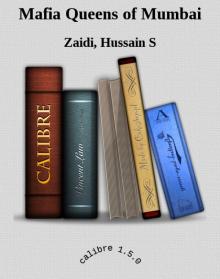 Mafia Queens of Mumbai
Mafia Queens of Mumbai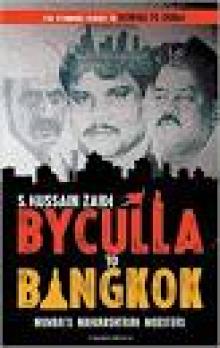 Byculla to Bangkok
Byculla to Bangkok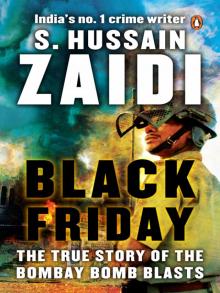 Black Friday
Black Friday The Endgame
The Endgame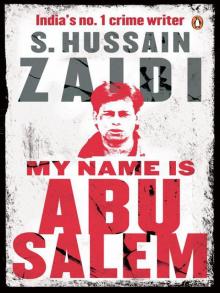 My Name is Abu Salem
My Name is Abu Salem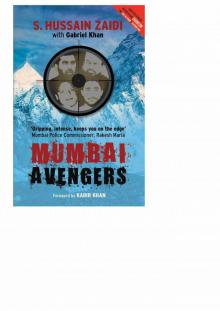 Mumbai Avengers
Mumbai Avengers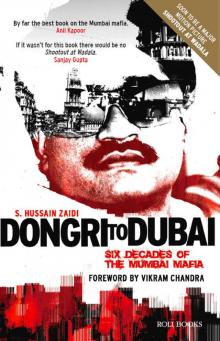 Dongri to Dubai - Six Decades of the Mumbai Mafia
Dongri to Dubai - Six Decades of the Mumbai Mafia Eleventh Hour
Eleventh Hour